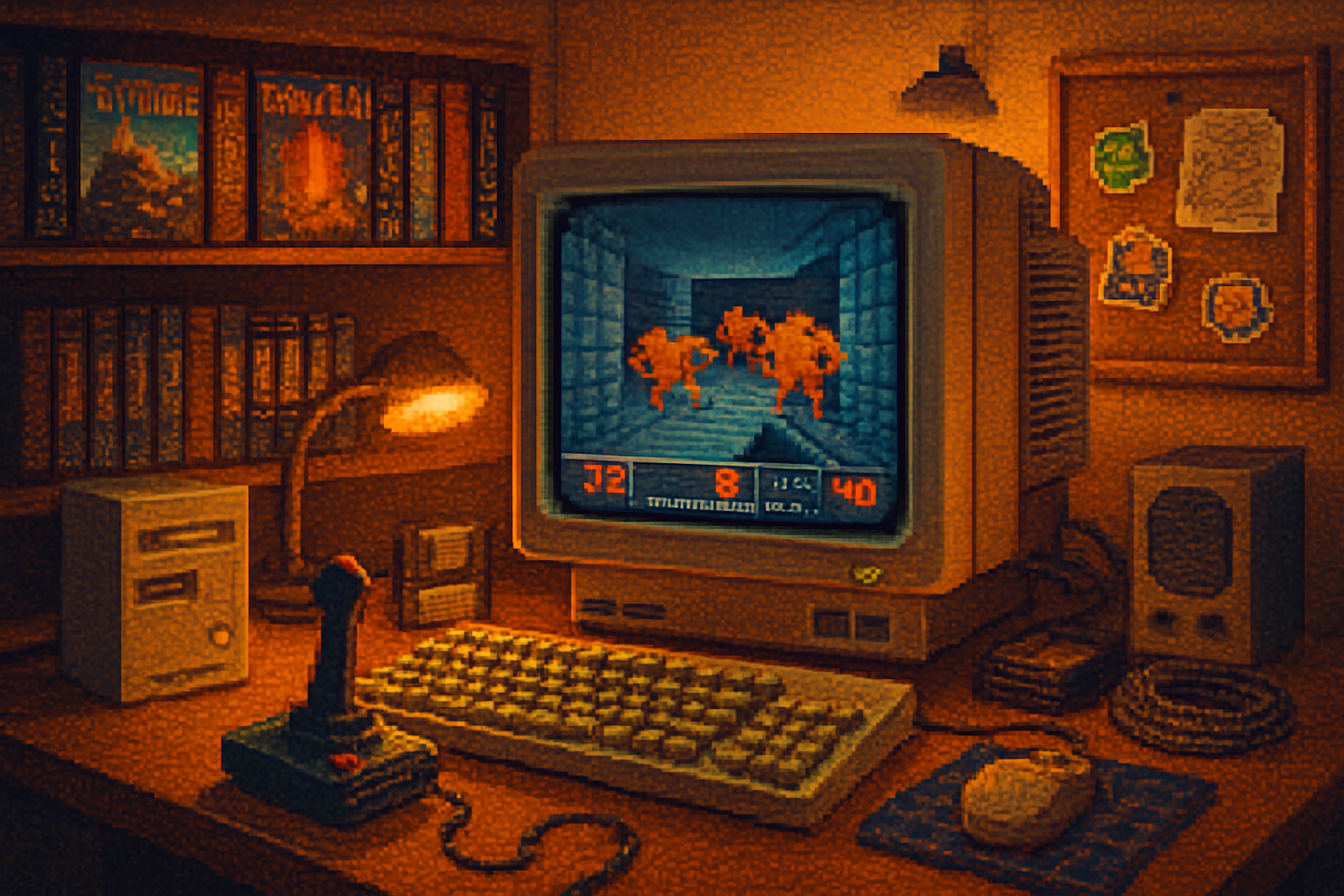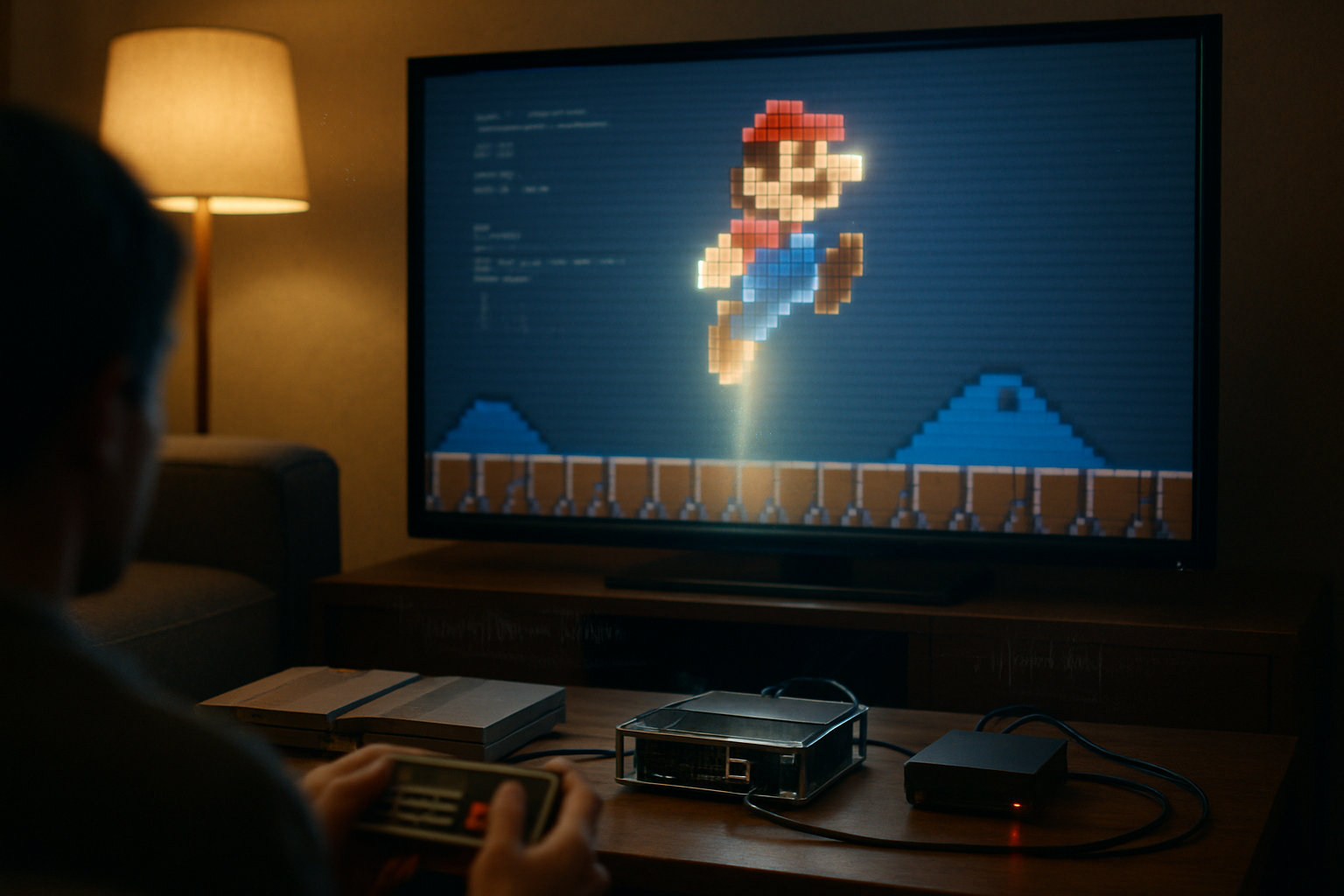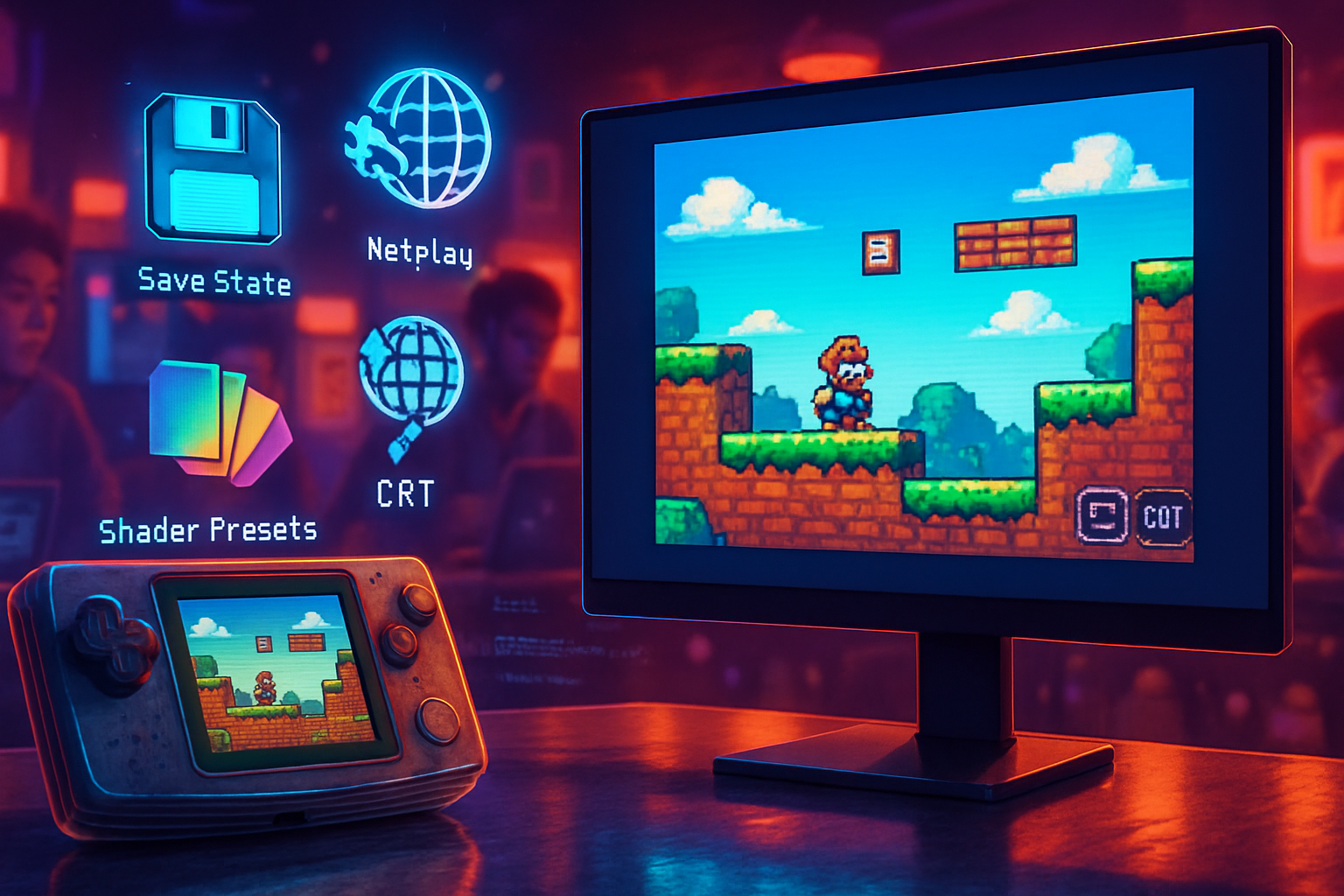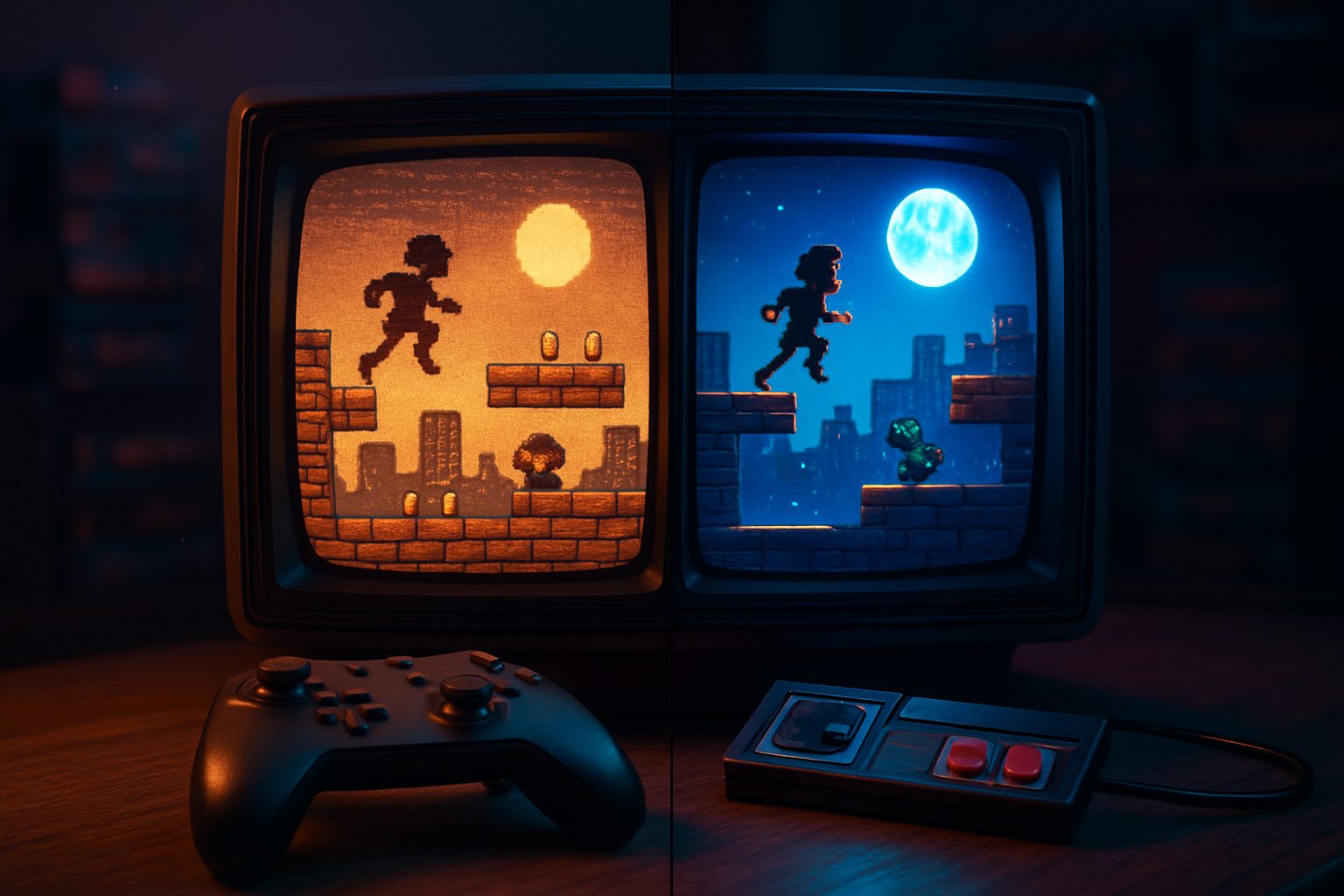· retrogaming · 6 min read
Gaming with Nostalgia: The Best Retro Games to Play on Your Newly Built Vintage PC
Dust off your joystick and fire up the emulator - here’s a curated list of must-play retro PC classics, plus a practical setup and performance guide to make your newly built vintage PC deliver authentic, smooth nostalgia.

Introduction
There’s something special about older games: tight design, striking pixel art, and memorable soundtracks that stay with you for decades. If you’ve just finished building a “vintage” PC-either a modern machine tuned for classic titles or an actual retro rig-this guide helps you pick the best games and configure your system so those classics run (and feel) their best.
Why build a vintage PC or emulate one?
- Authentic feel - Playing in the same aspect ratios, with original input lag and audio behavior, can be a huge part of the charm.
- Compatibility - Some older titles require DOS/Windows 95-era hardware or drivers that modern OSes don’t natively support.
- Preservation - Properly running old software preserves the original experience better than upscaling-only approaches.
Must-play retro PC games (and quick setup notes)
Below are essential classics across DOS and Windows 95–era PC gaming. Each entry notes why it’s worth your time and any special emulation tips.
DOOM (1993)
- Why - A genre-defining shooter with fast gameplay and huge modding longevity.
- Tips - Use source ports like GZDoom for enhanced compatibility, high-res textures, and modern input. For authentic DOS experience use DOSBox or a DOS VM.
- Links - GZDoom and source ports are widely documented on community pages; for DOS emulation see
Duke Nukem 3D (1996)
- Why - 90s attitude-heavy FPS with interactive levels and memorable set pieces.
- Tips - EDuke32 is the modern engine of choice for fixes and modern features.
Fallout 1 & 2 (1997–1998)
- Why - Deep CRPGs with dark humor and branching narrative.
- Tips - GOG versions are patched for modern systems; use compatibility settings or community patches if running natively.
- Buy: GOG
Baldur’s Gate / Planescape - Torment (1998–1999)
- Why - Some of the best-written CRPGs ever; play for story and party-based mechanics.
- Tips - The Enhanced Editions or GOG releases simplify running them on modern OSes.
X-COM - UFO Defense (1994)
- Why - Tactical, unforgiving, and endlessly replayable.
- Tips - The OpenXcom project modernizes the engine and fixes numerous bugs.
Sid Meier’s Civilization II (1996)
- Why - One of the most influential strategy games ever.
- Tips - Modern releases and patches fix graphics and multiplayer issues on modern displays.
SimCity 2000 (1993)
- Why - Foundational city-building sim with deep charm.
The Secret of Monkey Island / Day of the Tentacle (LucasArts adventure games)
- Why - Witty writing and puzzles; excellent for ScummVM.
- Tips - Use
Myst (1993)
- Why - Atmospheric puzzle-adventure that defined a genre.
System Shock (1994) / System Shock 2 (1999)
- Why - Deep, immersive gameplay and influential design; System Shock has modern remasters and ports.
- Tips - Look to community patches and modern remakes for the best experience.
Diablo (1997)
- Why - Action-RPG with addictive loot mechanics.
- Tips - Diablo and many Blizzard classics are available on
Setting up your vintage PC: hardware considerations
You might be aiming for an authentic physical build (old motherboard, ISA cards, CRT) or a modern system tuned for retro play. Here’s how to approach each.
- Authentic retro hardware (PCs from the 80s/90s)
- Pros - Genuine experience with original sound cards, GPUs, and CRTs.
- Cons - Sourcing parts can be expensive and fragile; drivers and storage (IDE, MFM) require care.
- Tips - Use SCSI/IDE to SATA adaptors, replace failing capacitors, and document DIP switch settings. For networking or multiplayer, a serial/null-modem or IPX emulation might be needed.
- Modern hardware tuned for retro gaming
- Pros - Reliable, energy-efficient, and easier to maintain.
- Tips - Use a modern GPU and driver that supports OpenGL or Direct3D fallback for emulators. Prefer a 4:3-capable monitor or set up 4:3 scaling with integer pixels.
Operating system and virtualization options
- Native modern OS (Windows 10/11 or Linux) - Use emulators and wrappers like
- Virtual machines - VirtualBox/VMware can run Windows 95/98 but may have hardware limitations for older DirectX or sound card emulation.
- Full hardware emulation: PCem and 86Box emulate entire vintage PCs with accurate hardware behavior-great for authenticity.
Essential emulators & wrappers
- DOSBox (and variants) - For DOS-era games. Key for sound card emulation and CPU cycle tuning.
- ScummVM - Best for LucasArts and similar adventure titles.
- RetroArch - A front-end with many cores for consoles and some PC-era emulation.
- PCem / 86Box - Accurate hardware emulation for full PC builds.
- dgVoodoo2 / nGlide - Wrappers for old graphics APIs (DirectDraw/Glide) to run 3DFX/DirectX-era games on modern GPUs. dgVoodoo2:
- OpenXcom, EDuke32, GZDoom - Modern source ports for classic PC titles.
Practical performance & authenticity tweaks
- DOSBox cycles - Many DOS games need CPU cycles tuned. In dosbox.conf, set cpu cycles to auto or a fixed range. Example:
[cpu]
core=auto
cycles=max ; or 30000 for a fixed targetSound card emulation - Set sbtype=sb16 and oplmode=auto for good Sound Blaster support. Some music expects AdLib (FM) synthesis.
Output & scaling - Use output=opengl or opengl2 in DOSBox for shader support and better scaling. Enable integer scaling or nearest-neighbor to avoid blur.
CRT and scanline shaders - If you want the look of a CRT, use RetroArch shaders or GZDoom post-processing. Alternatively, a real CRT monitor provides the most authentic display characteristics.
Frame limiting & VSync - Use frame limiting where appropriate to prevent runaway fps. For games tied to CPU clock, use emulators’ cycle limiting rather than relying on vsync.
Input - Turn off mouse acceleration in your OS. Configure game-specific mouse settings in emulators. For joysticks, consider USB adapters that translate modern controllers to old gameport/serial inputs if using real hardware.
3DFX & Direct3D titles - Use dgVoodoo2 or nGlide to run Glide/old Direct3D games reliably on modern GPUs.
Example DOSBox config snippet
[sdl]
output=opengl
[dosbox]
machine=svga_s3
memsize=16
[sblaster]
sbtype=sb16
oplmode=auto
[cpu]
core=dynamic
cycles=autoLegal & where to buy games
Respect copyright: unless a title has been explicitly released as freeware, abandonware sites fall into a legal gray area. Buy from trusted digital stores when possible - GOG and Steam offer many classics DRM-free or patched for modern systems. For titles you own physically, community guides often show how to make those copies work in emulators.
Troubleshooting & compatibility resources
- PCGamingWiki - excellent compatibility notes and fixes for many older PC titles.
- DOSBox and ScummVM forums - community knowledge is invaluable when hitting obscure bugs.
Quick setup checklist
- Decide - authentic retro hardware or modern tuned machine.
- OS - modern OS + emulators, or use PCem/86Box for full hardware emulation.
- Install - DOSBox, ScummVM, RetroArch, and any source ports needed (GZDoom, EDuke32, OpenXcom).
- Configure - dosbox.conf (sbtype, cycles), display output (OpenGL), integer scaling.
- Controls - map controller/keyboard, disable OS mouse accel.
- Sound - test SB16/AdLib where needed, use wrappers for DirectDraw/Glide if necessary.
- Buy - get cleaned installers from GOG/Steam or use original media you own.
Conclusion
Whether you’re chasing pixel-perfect authenticity with PCem or a comfortable modern experience with DOSBox and source ports, your newly built vintage PC can be a time machine to classic eras of gaming. Start with the classics on this list, tweak emulation settings for sound and timing, and enjoy how much personality older games still pack. Happy nostalgia-hunting!
References
- DOSBox: https://www.dosbox.com
- ScummVM: https://www.scummvm.org
- RetroArch: https://www.retroarch.com
- PCem: https://pcem-emulator.co.uk
- 86Box: https://86box.net
- dgVoodoo2: https://dege.freeweb.hu/dgVoodoo2/
- GOG: https://www.gog.com
- PCGamingWiki: https://www.pcgamingwiki.com



